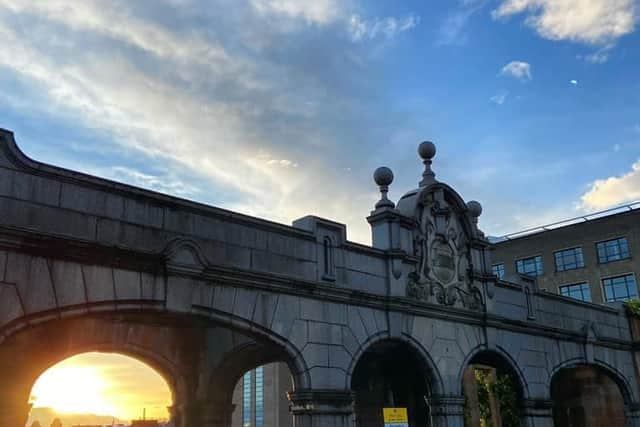Remembering Glasgow Royal Maternity Hospital: Rottenrow and the contribution it made to Glasgow and the wider world
and live on Freeview channel 276
It’s been over 20 years since the last bricks of the Glasgow Royal Maternity Hospital on Rottenrow came tumbling down - all that remains are two entrance arches - but as the birthplace of hundreds of thousands of Glaswegians, it is still reminisced about fondly today
If you were born in Glasgow before 2001, there’s a good chance you were born here - and if not, no doubt you had family, friends, or arelation that arrived into the world here or worked in the maternity hospital. It was an institution in its own right - and the staff had the universal respect of locals.
Advertisement
Advertisement
Glasgow had every right to be proud of its maternity hospital as well - the Glasgow Royal Maternity Hospital was internationally renowned as a leading training centre in midwifery - producing some of the very best midwives that Victorian and 20th century medicine had to offer.


From its inception, the hospital (in classic Glaswegian fashion) has always been incredibly welcoming and inclusive to any and all of the cities residents.
It was highly unusual for its time because it cared not just for married women, but also for the destitute and unmarried mothers. Many disapproved of the supposed “immorality” of caring for the babies of unmarried women, but the hospital argued human life was more important.
Founded in 1834 and demolished in 2001 - for just under 170 years this building was responsiblie for Glaswegian births. By the time of its demolition, the Victorian building had fallen into disrepair and was deemed inadequate for modern requirements. It’s been sorely missed by the community ever since, but developers and Glasgow City Council had the sense to leave the facade on Rottenrow, marking its cultural importance to the city.
Advertisement
Advertisement
Located on the Rottenrow, the steep slope on Montrose Street and North Portland Street was branded induction hill by midwives and mothers. It was thought, whether ironically or in sincerity, that the walk up the hill was enough to induce labour in pregnant patients waiting on a stubborn baby past its due date.
As well as being the birthplace of generations of Glasgow residents, the hospital also birthed ultrasound technology - which is now a common procedure conducted on pregnant in maternity wards across the world.
In 1956, ultrasound was first used for medical purposes - Glasgow was the place where it saw its first light. Besides, ultrasound was the brainchild of Glasgow-born engineer Tom Brown and English Obstetrician Ian Donald.


They were the first people who crafted the prototype system - after the technology was originally created to detect the flaws in industrial ships being built along the Clyde. They adapted the technology to capture images of fetuses inside the womb, and less than 15 years later the revolutionary technology born on the Rottenrow was used in nearly every hospital the world over.
Advertisement
Advertisement
It wasn’t just ultrasounds that were invented in the hospital either, as the hospital led the way in major developments in obstetrics, including Murdoch Cameron’s pioneering work in caesarean sections, and Munro Kerr’s research into maternal mortality.
Since it’s demolition, the site has since been turned into a public park, part of the University of Strathclyde campus.
George Wyllie’s ‘Monument to Maternity’, a sculpture depicting a giant metal nappy pin, is the centrepiece of the park.
